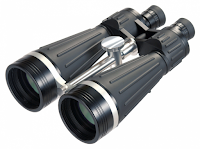Binoculars come from the Latin, "bi" meaning two, and "oculus" meaning the eye. As the name implies, this tool has 2 visions / tubes that adjust the amount of our eyes. In it, this binocular has a prism that is used to "fold" the cross-light line so as to produce a shadow in the right direction. With this binocular, the observed objects will be real and will not be reversed.
How binocular lenses work?
Lens Composition
1. Binocular with Erecting Lenses
(Visualization Erecting Lens)
Source: en.wikipedia.org
This type of binocular can produce zoomed-in / zoom-out as desired, without having to replace eyepiece first. The arrangement for these lenses is Objectif Lens - Erectic Lens - Prism - Eyepiece / Oculer Lens. Erecting Lens position can be shifted, the further position of Erectic Lens from Objectif Lens then the visualization of the observed objects the greater, and vice versa
.
2. Porro Prism Binocular
(Porro Prism Visualization)
Source: en.wikipedia.org
This type of binoculars has 2 prisms that serve to invert the shadow, the first prism after the objective lens serves to invert the shadow vertically, and the second lens serves to invert the image horizontally. The order is: Objectif Lens - Double Porro Prism - Eyepiece / Oculer Lens.
(Binocular with Porro Prism)
Source: en.wikipedia.org
C. Roof Prism Binocular
(Roof Prism Visualization)
Source: en.wikipedia.org
(Binocular with Roof Prism)
Source: en.wikipedia.org
1. Independent Focus,
Each binocular tube has its own focus regulator. So in the focusing phase just by adjusting the focuser of each binocular tube.
(Binocular with Independent Focus)
Source: thebinocularshop.com
Two tubes have only one focuser, but this type of binoculars in one tube usually have a special focuser, this special focuser is required for anisometropic patients
(Binocular with Central Focus)
Source: 365astronomy.com
Types of Objective Lenses
The outer surface of this objective lens is a protective layer which is usually called a coating. The function of this coating is various, such as anti-reflection, ultra violet filter, light transmition and others. Among the common coatings used in some binoculars are:
1. Red Coating (Ultra Violet Filter)
The red color is dominated for protection in maximum lighting conditions. Binoculars with red coating colors are very well used for daylight in bright light conditions, because they can reduce almost 1/3 light, especially UV light, eg in the desert or hotspot field areas.
2. Blue Coating (Anti Reflection)
The blue color in binocular coating is the most we encounter, blue is the basic coating type, because the standardization of the lens usually must have anti-reflection for each blink of the eye, or reflex light when aiming the target does not make the head become dizzy. Binocular with blue coating is very well used for various conditions, both day and night.
3. Green Coating (Light Transmition)
The green color in the binocular lens is usually a light transmition type of amber stone that is able to drain light on all parts of the image of the captured object lens. Coating type of light transmition is suitable for use in low lighting conditions, eg at dusk or in a dimly lit (not dark without light) so it looks brighter.
4. Multi Coating (Multi Filter)
Not infrequently there are also several other colors, in addition to green, red and blue, such as purple, orange, and others, the color is the result of a combination of multiple coatings combined to benefit from multiple filters.
Types of Mounting
Until now there are no telescope manufacturers that make a special mounting binocular based on semi-automatic (motoric) and automatic (robotic). There is only binocular based hand claps and manual mounting. If you want to use binoculars with automatic mounting or commonly known robotic mounting, can be combined with mounting binoculars with a little modification.
(Modification Celestron Nextar Mount with Orion BT70 Binocular)
Source: id.pinterest.com
















0 comment:
Post a Comment